Honor is Huawei’s budget and youth brand and the Honor 20 series is the Honor flagship line.
While the Honor 20 Pro doesn’t have the Huawei P30 Pro’s RYYB sensor technology, it has a similar four-camera system that should give it wide appeal.
Naturally, the Honor 20 Pro has an extensive specification, but it’s the camera aspects that interest us.

Four Cameras
The main camera is a 48Mp unit with a 1/2-inch type Sony IMX586 sensor and an aperture of f/1.4. That’s the widest aperture currently available on a smartphone camera. It means that it lets through more light than most, which gives the Honor 20 Pro an advantage in low light conditions.
This camera is also stabilised via optical, artificial intelligence and electronic means. In addition, it has both phase detection autofocus (PDAF) and laser autofocus.
There’s also a 16Mp super wide angle camera that captures a 117-degree angle of view and is supported by distortion correction.
This camera has an aperture of f/2.2
The third camera is an 8Mp telephoto unit with an aperture of f/2.4. This optically stabilised camera enables the Honor 20 Pro’s 3x optical zoom and 5x hybrid zoom. It’s also possible to use the digital zoom to up to 30x.
Like the primary camera, it has PDAF and a laser autofocus system.
The fourth camera in the quad is a 2Mp macro camera which has an aperture of f/2.4 and can focus as close as 4cm from the subject.
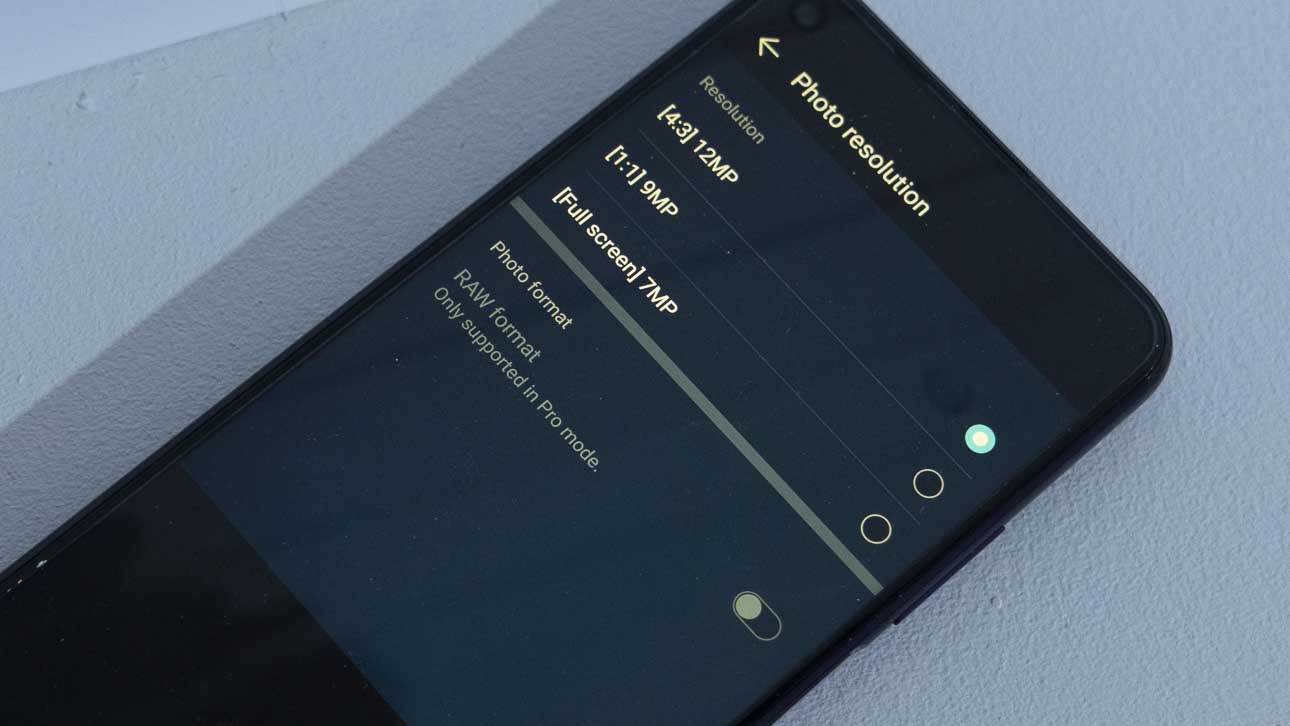
Artificial Intelligence (AI)
Artificial intelligence (AI) is an increasingly important feature in photography, especially with smartphones. The Honor 20 Pro makes use of AI in several ways. It refers to them as AI Camera, AI Ultra Clarity mode, AIS Super Night mode, AI Image Stabilization (AIS) and AI Color mode.
This technology is designed to help the Honor 20 Pro produce natural images in a range of lighting conditions, get shape images in low light and capture more detail with less blur.
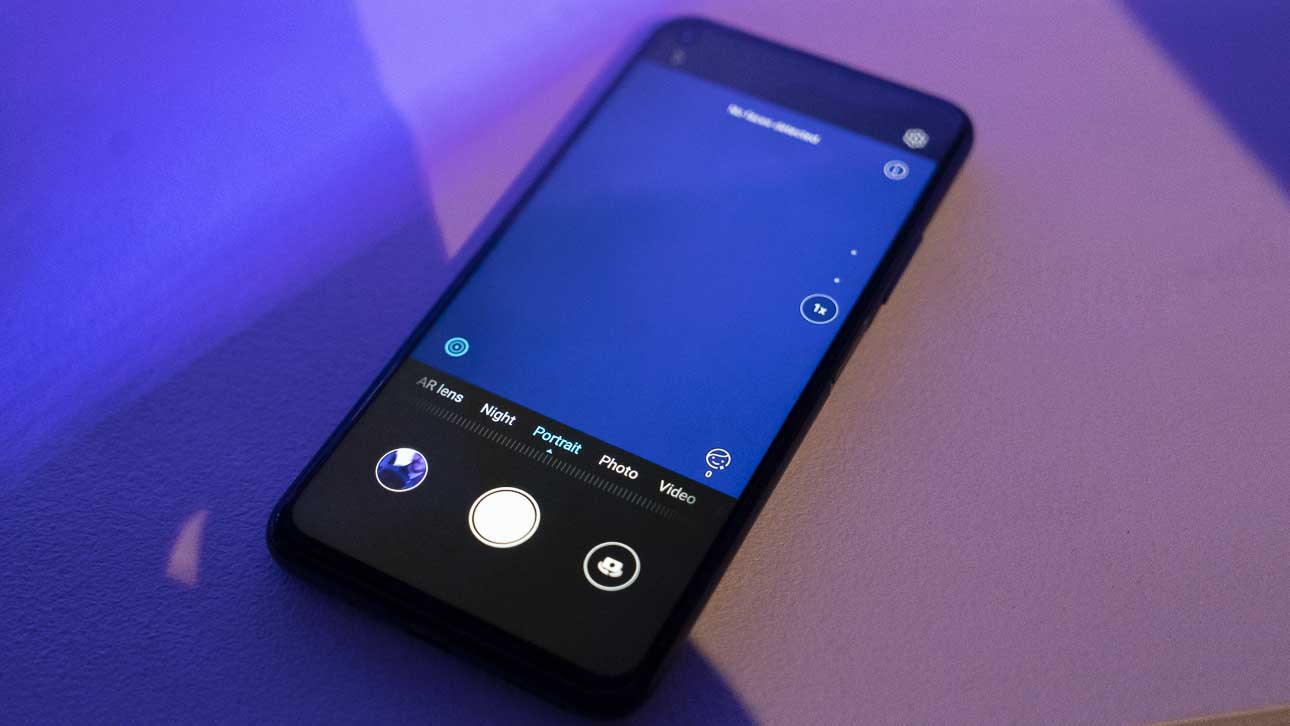
AIS Super Night mode
When Night mode is activated, the Honor 20 Pro first detects whether it’s handheld or it’s supported and is therefore motionless. It then analyses the types of movement being made.
Next, the AI light detection system kicks in to assess the exposure time and how many images are required to make the final shot.
After the images have been captured, the camera selects the sharp ones and composites ‘more than 10’ to create one image. This compositing is very demanding on the processor because each image needs to be carefully aligned. With a 12Mp image, it requires over 12 million tests.
During the compositing, the Honor 20 Pro analyses the brightness of different sections of the image and adjusts them separately to retain detail in the highlights and shadows. The phone also looks at the image at a pixel level, finding the average brightness to eliminate noise.
In the last stage, the Honor 20 Pro applies noise reduction.
48Mp AI Ultra Clarity Mode
Honor opted for the 48Mp Sony IMX586 sensor to enable the Honor 20 Pro to capture lots of detail. When the 48Mp AI Ultra Clarity mode is activated, the phone takes several full-resolution images and merges them to create a ‘Super 48Mp Photo’ with better detail and colour than normal.
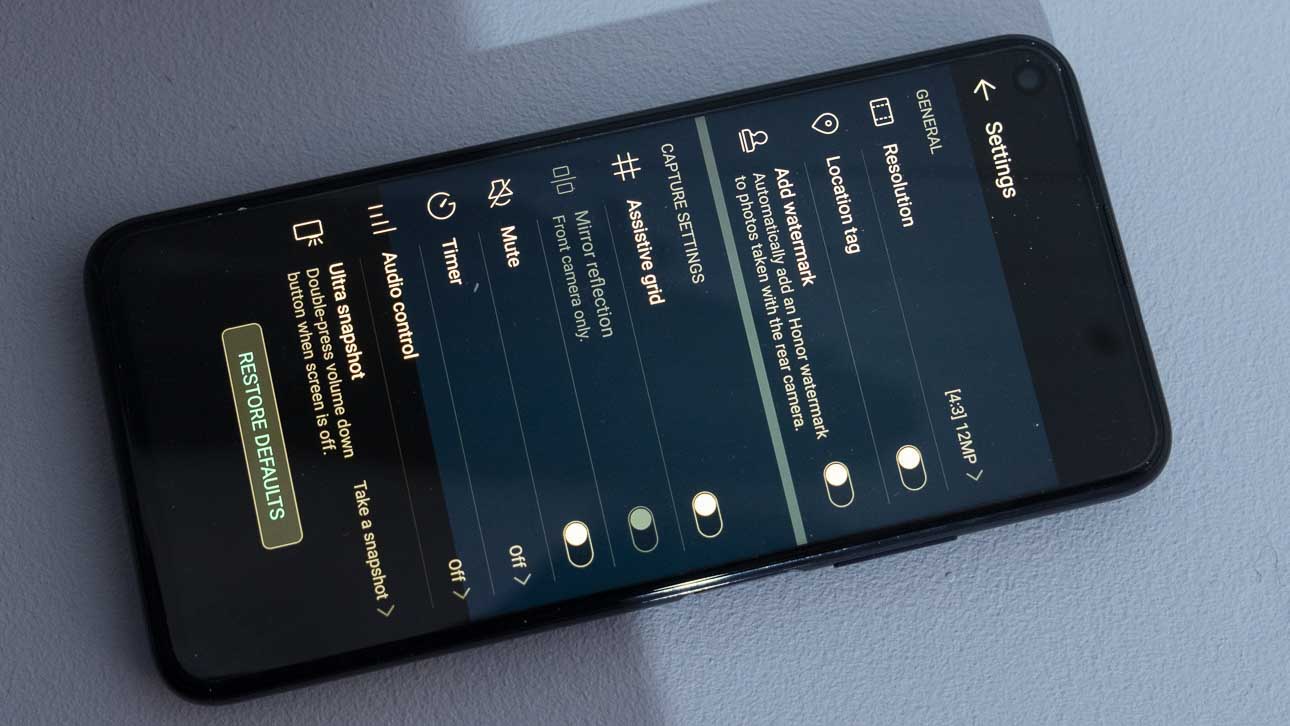
Video
The main camera can be set to capture UHD 4K video with electronic image stabilisation (EIS) helping to smooth out any jitter or shake.
Selfie Camera
At last, selfie cameras are starting to be recognised as an important component of a smartphone. The Honor 20 Pro’s selfie camera has a 32Mp sensor and an f/2.0 aperture as well as electronic image stabilisation (EIS).
There’s also a 3D Portrait Lighting option to help produce more flattering images.
It’s also possible to shoot 1080p video (with EIS) with this camera.
Key Specifications
- 48Mp AI quad camera
- 7nm Kirin 980 AI Chipset
- 32Mp AI front camera
- 4000mAh all-day battery
- Rear camera: 48Mp f/1.4 4-axis OIS, 16Mp 117-degree super-wide angle, 8Mp telephoto OIS, 2Mp macro
- Max ISO 204,800
- Display 6.26-inches
- Chipset 7nm Kirin 980 Octa-core, 2xCortex-A76 (2.6GHz max) + 2xCortex-A76 (1.92GHzmax) + 4xCortex-A55 (1.8GHz-max)
- Mem0ry 8GB RAM + 256GB ROM
- OS: Magic UI 2.1.0 (Compatible with Android 9.0)
- Price: €599
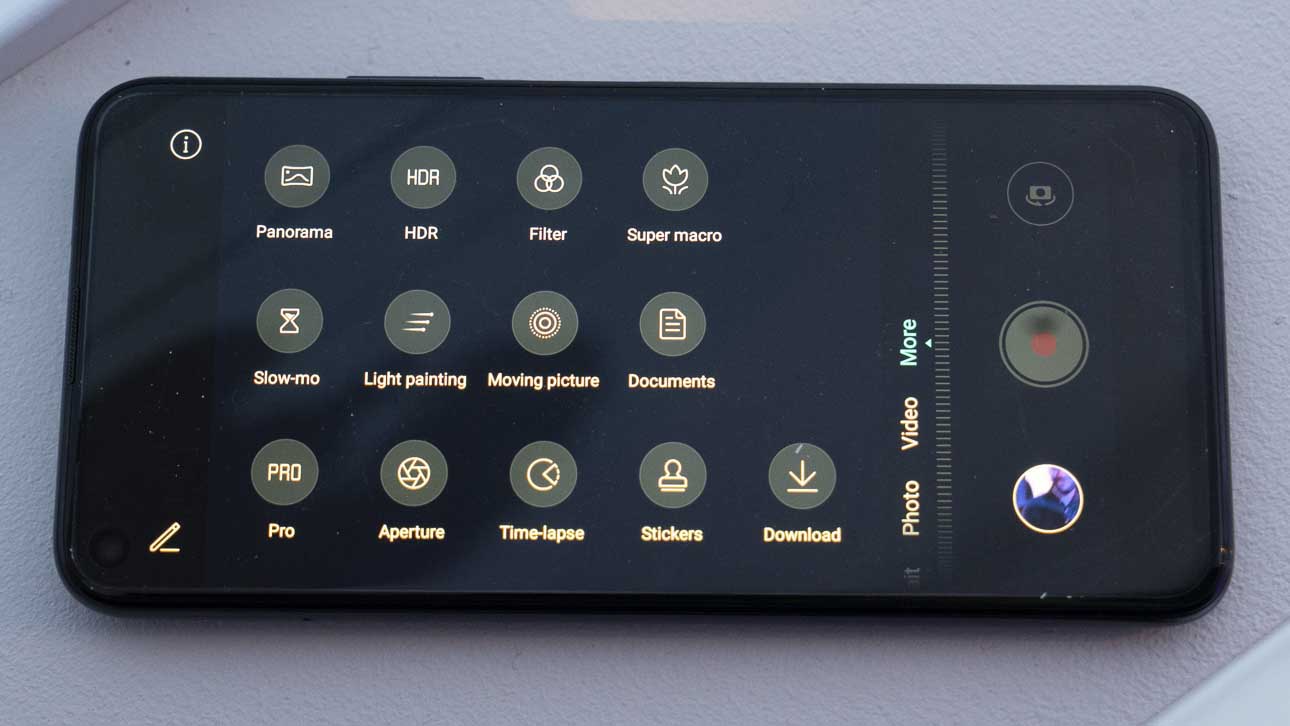
Build and Handling
The Honor 20 Pro feels nice in your hand. It’s slim and smooth, with high-quality styling. I especially like that the fingerprint recognition is built-in into the button on the side of the phone. It’s a more logical place the grab the phone, so it starts up a bit quicker.
Honor has used a similar layout to Huawei for the native camera app. The key settings such as Photo, Portrait, Video and More are along the bottom when the phone is held vertically. By default, the camera opens in Photo mode, but you can just tap on the mode you want to use.
If you want to adjust the aperture or bokeh effect, you’ll find Aperture mode nested under More. Same deal for Pro mode, if you want to take control over aspects such as shutter speed, white balance, or you want to record raw files.
It’s good to see that the AI control is visible at the top of the screen when the camera is open. That means it’s easy to turn it on and off as required.
The zoom function is also logical, just tap on the 1x, 3x, 5x marker on the side to toggle through the options. Alternatively, you can pinch zoom to access the digital zoom which goes up to 30x.
The other setting controls are accessed by tapping the cog icon in the top right corner of the screen.
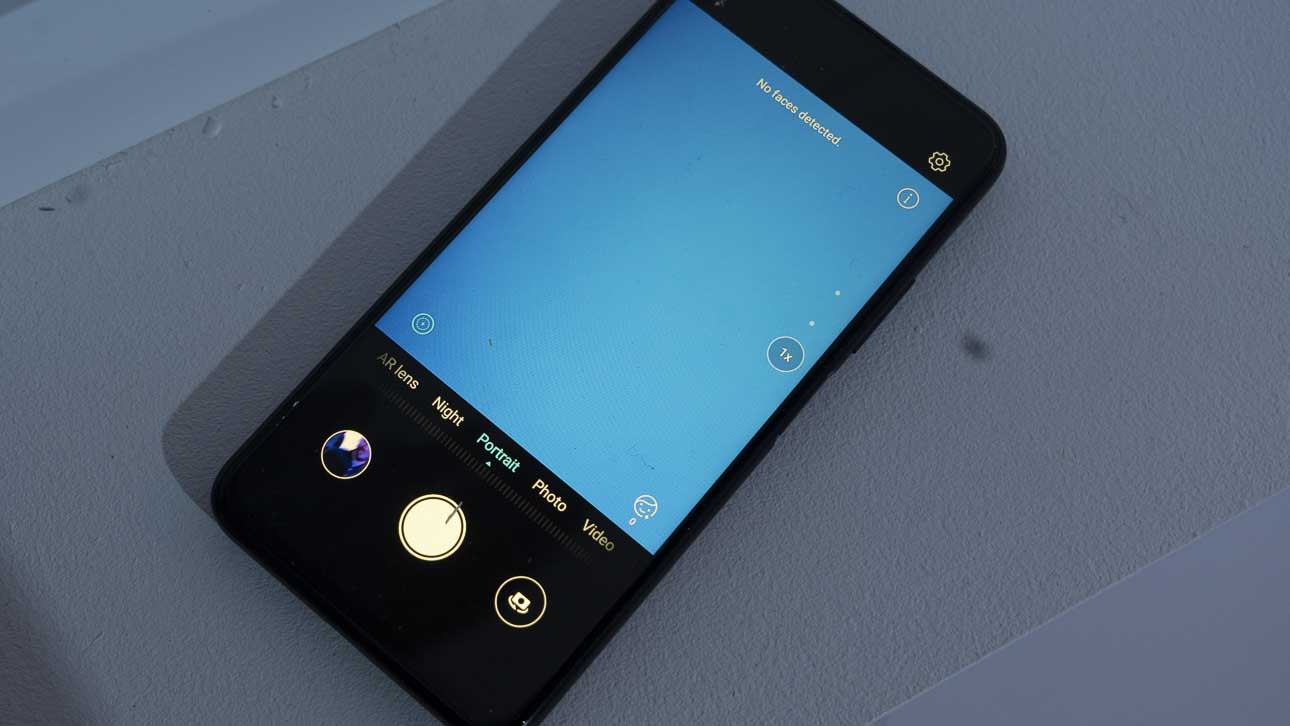
Performance
Smartphone launches are a bunfight and there were limited shooting scenarios at the Honor 20-series launch. Nevertheless, I was able to shoot a lowlight set-up with the Honor 20 Pro and the result is very impressive. I’ve also now got a review sample and our testing is underway properly.
What particularly impressed me, however, is that as well as taking a few shots with the phone held still, I also moved the camera a little while the shots were taken. But you wouldn’t know that from the final image. The fine details are visible and there’s no sign of blur or noise.
The launch venue was poorly lit with coloured lights, but the Honor 20 Pro’s AF system coped well. It managed to get everything I directed it at sharp.

Sample Images
Follow the link to browse and download full-resolution images
[FAG id=84994]
Early Verdict
Honor really seems to have pushed the boat out for the Honor 20 Pro. It has a larger sensor, a maximum aperture of f/1.4 and an excellent Night mode along with a top sensitivity setting of ISO 204,800.
I’ll update this review as soon as I can after shooting a wider range of subjects. However, DXOMark has already declared that the Honor 20 gets joint second-ranking overall with a score of 111.


